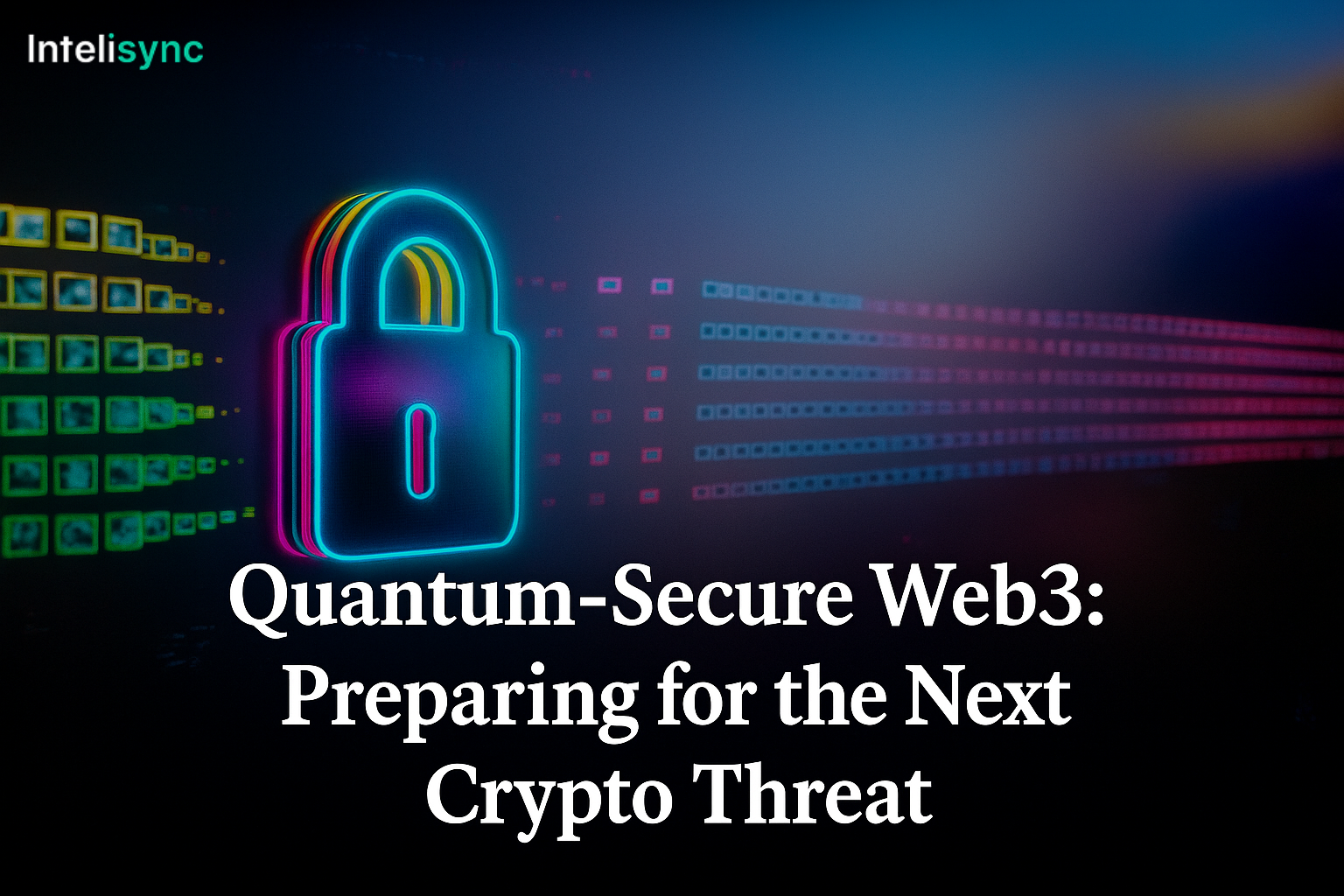Introduction
Web3 wallets have emerged as one of the most important access points to the decentralized internet. Originally developed as holding cells for cryptocurrencies, wallets in 2025 are taking shape as identity-centric centers, used for far more than storage alone. They are turning into digital passports for asset management, credential verification, and secure access to dApps, metaverses, and other fin-tech services.
Moving from custody to identity isn’t just a technology upgrade it’s a wholesale reimagining of how it is that users interact with the digital economy. In this post, I want to dive into the evolution of Web3 wallets, what has driven this shift, and why identity is becoming the cornerstone of the evolution in Web3 adoption.
The Custody Era: Early Web3 Wallets
Early in the 2010s, wallets such as Bitcoin Core or hardware devices like Ledger and Trezor only had one job: holding private keys in a provably secure manner.
Core Functions of Early Wallets
- Stashing cryptocurrencies like Bitcoin and Ether.
- Facilitating peer-to-peer transactions.
- The connection between users and blockchain networks.
Although these wallets secured the first adopters, they were also hard for newcomers to use. Users had to:
- They remember or backup seed phrases.
- Manually pay gas fees on every transaction.
- Trek impossible interfaces made for the few, not the many.
For techies it was clearly a solution but for the general public it lacked wide adoption.
Smart Wallets: The Intersection Between Custody and Usability
From 2022–2024 wallets started becoming smart wallets or account abstraction wallets. New additions to the stage brought usability improvements which simplified Web3 to the masses.
Key Features of Smart Wallets
- Gas fee abstraction: You may pay fees in stablecoins or have those sponsored.
- Cross-chain Interoperability: Your wallet connected to Ethereum, BNB Chain, Polygon, Solana, and Layer 2 rollups with just one click.
- Social recovery features: Doing away with having to remember those long seed phrases.
- Mobile-first UX: Apps such as Rainbow, Argent and Coinbase Wallet have made it easier to on-board.
These enhancements enabled increased adoption from retail investors, gamers and enterprises experimenting blockchain integrations.
2025: Web3 Wallets as Identity Anchors
The wallet breakthrough in 2025 sees one stark shift: custodianship to identity-first platforms.
Wallets as Digital Identity Managers
- DID and VC are being implemented in wallets.
- Users are able to verify their identity across services without sharing private information.
- Single sign-on with wallets Abandon login systems in favor of wallets that do double duty for Web2 and Web3 hybrid applications.
Example: A freelancer might be able to validate credentials in his wallet to gain access to international job posting platforms without going through the traditional background checking service.
Wallets in the Metaverse
In the metaverse, wallets will soon need to manage more than tokens avatars, in game assets and our social identities.
- Users can take their digital selves from one metaverse to the next with a single wallet.
- The skins, the virtual land, the NFTs are all easily transferable.
- The AI-based identity characteristics model avatars according to one’s own preferences.
In this sense, wallets serve as the core of the digital self tech stack in immersive economies.
Compliance and Regulation
- Governments and regulators are playing catch-up here, but wallets are starting to include KYC/AML as part of the wallet whilst maintaining decentralisation.
- ZKPs enable verification of compliance without any exposure of private data.
- Institutional-grade wallets providing custody + compliance for enterprises and DeFi applications.
- Identity-Powered Wallets Identity-anchored wallets continue to be a major onboarding tool into secure, governed DeFi (RegFi) ecosystems.
Custody + Identity = The New Wave of Wallets
The wallets of the future integrate asset management and identity verification to deliver a potent multi-layered service.
Pros of Custody + Identity Convergence
- Self-sovereign identity (SSI): YOUR data.You possess and control it, not massive centralized entities.
- Cross-Platform App: A single wallet, for use with financial apps, gaming worlds and business solutions.
- Log in, verify, and transact with a single click and instant onboarding.
- Trust and security: Mitigation of fraud and phishing, since identity attributes can be cryptographically authenticated.
Business Scenarios for Identity-Driven Wallets
Decentralized Finance (DeFi)
Identity wallets seamlessly handle compliance for lending and borrowing protocols.
DeFi services can provide credit scoring based on wallet history, not on centralized institutions.
NFTs and Creator Economy
Artists can embed NFTs with verified identities to protect their intellectual property.
Buyers receive confidence in provenance, cutting down on scams.
DAOs and Governance
Wallets can be used for reputational (not token) voting.
Self-sovereign: Verified identities mitigate Sybil attacks and promote democratic participation.
Enterprises and Web2.5 Models
Corporates adopt identity wallets for employee onboarding, supply chain traceability, and trusted access control.
Wallet-based login and verification replacing Web2 and Web3 hybrids Web2 and Web3 ecosystems are connected through hybrid decentralized platforms with authentication build using wallets.
Challenges in Wallet Evolution
But while innovation has been rapid, the evolution of Web3 wallets comes with its fair share of difficulties:
- Security risks: The same is true of attack surface: The more functions a smart device fills, the more openings there are for an attacker to exploit.
- User Education: Seed phrases, Recovery, Best practices many still don’t get it.
- Regulatory confusion: Finding a balance between self-sovereignty and regulations is difficult.
- Interoperability barriers: Inter-similar agreement on blockchain standards is a work in the progress.
Solving these problems will determine how much wallets are embraced beyond the crypto native.
The wallet’s role in the e-wallet revolution, as facilitated by Intelisync
Intelisync. ai is building wallet infrastructure of the future by:
- Creating identity-powered wallets that are able to merge custody with compliance.
- Multi-chain interoperability Multi-chain interoperability makes it more convenient to transfer assets.
- Integrating ZKP verification to support compliance through privacy by design.
- Enabling enterprise use with secure and scalable wallet infrastructure.
With an emphasis on security, scalability and user experience, Intelisync delivers wallets that are not just technologically advanced, but also compliant and user friendly.
Post-2025 – The Evolution of Web3 Wallets
In the future, wallets are supposed to develop even more:
- The AI inside wallets will make DeFi investments if the user is asleep, find fraud, and find a better rate to trade at.
- Biometric authorization will eliminate seed phrases completely.
- Finance across borders will be frictionless, with wallets serving as global digital banks.
- Wallets will be the new browsers and digitial citizenship will be at the center of wallets, with the ability to vote, have access to health care, and being able to tax wallets in decentralized societies.
At the end of Web2 finding the next Facebook was the ultimate fantasy, in Web3 these wallets will cease to be an adjunct, they will become the OS to Web3 life.
Conclusion
Few transitions in blockchain history have been more transformative than the path from custody-oriented tools to identity-based platforms forged by Web3 wallets. In 2025 Wallets are not only a vault for private keys but also an enabler for Digital Identity, Compliance and Global Access to the decentralised ecosystems.
While many wallets have already bridged custody to identity, a new generation of wallets will decide how users will engage with finance, with social platforms, with gaming, with governance, and with enterprise solutions.” Companies that get with it in this wallet-driven world and work with partners such as Intelisync will remain on the fast track when the decentralized economy arrives.
In other words: Your wallet is now not only where you keep things, but who you are in Web3.







